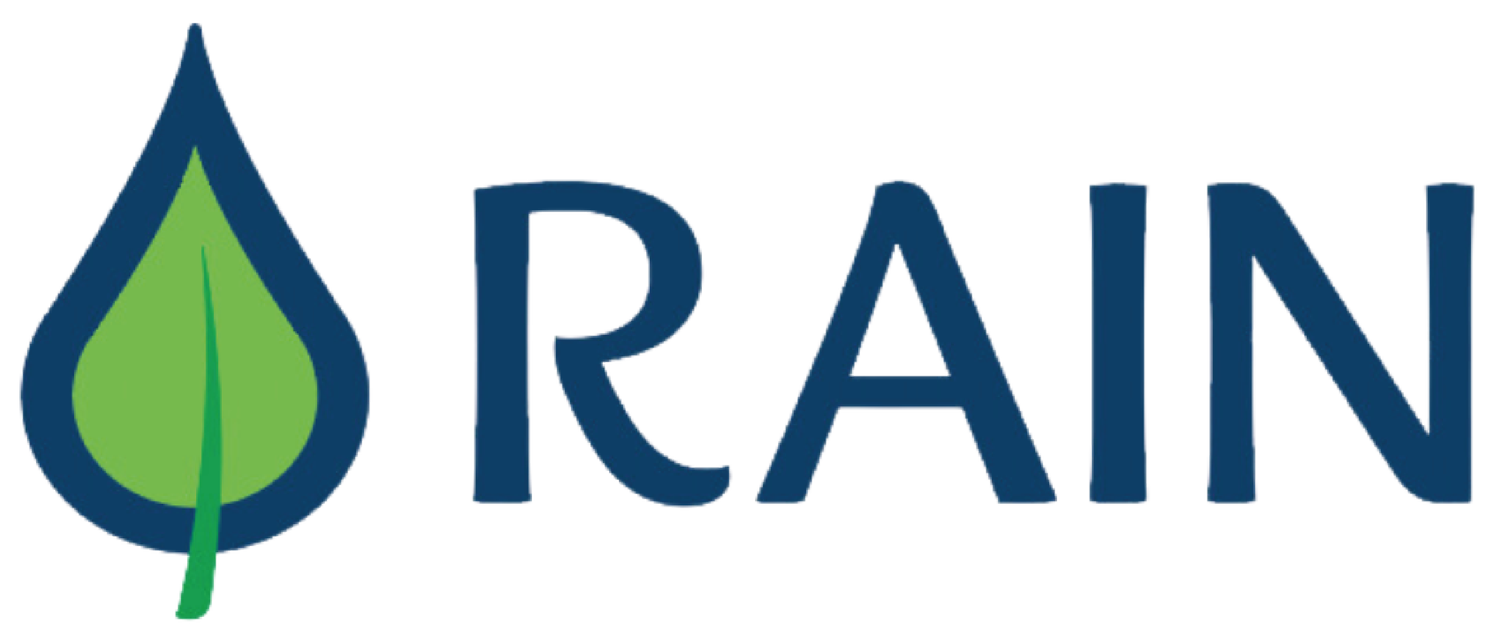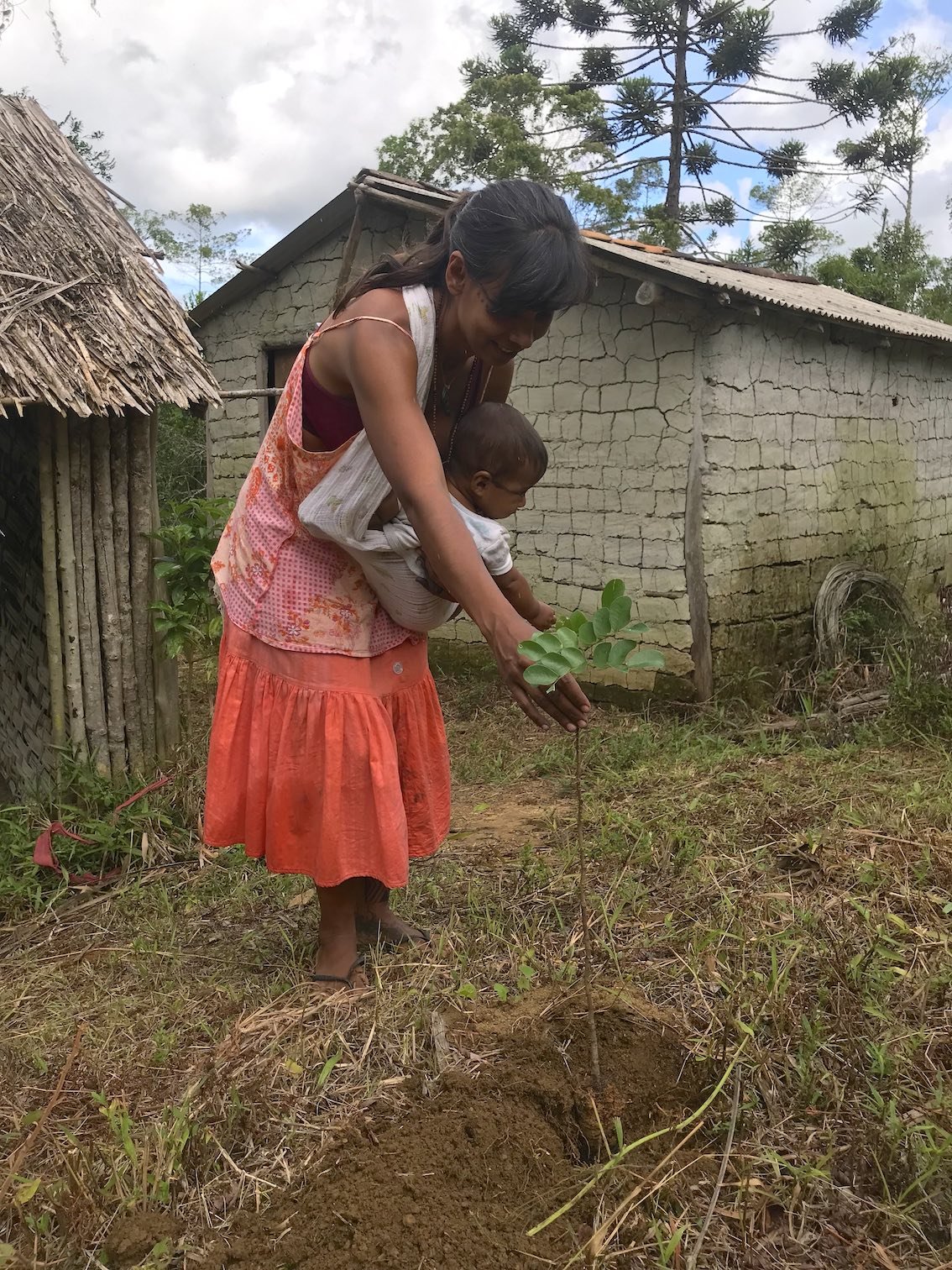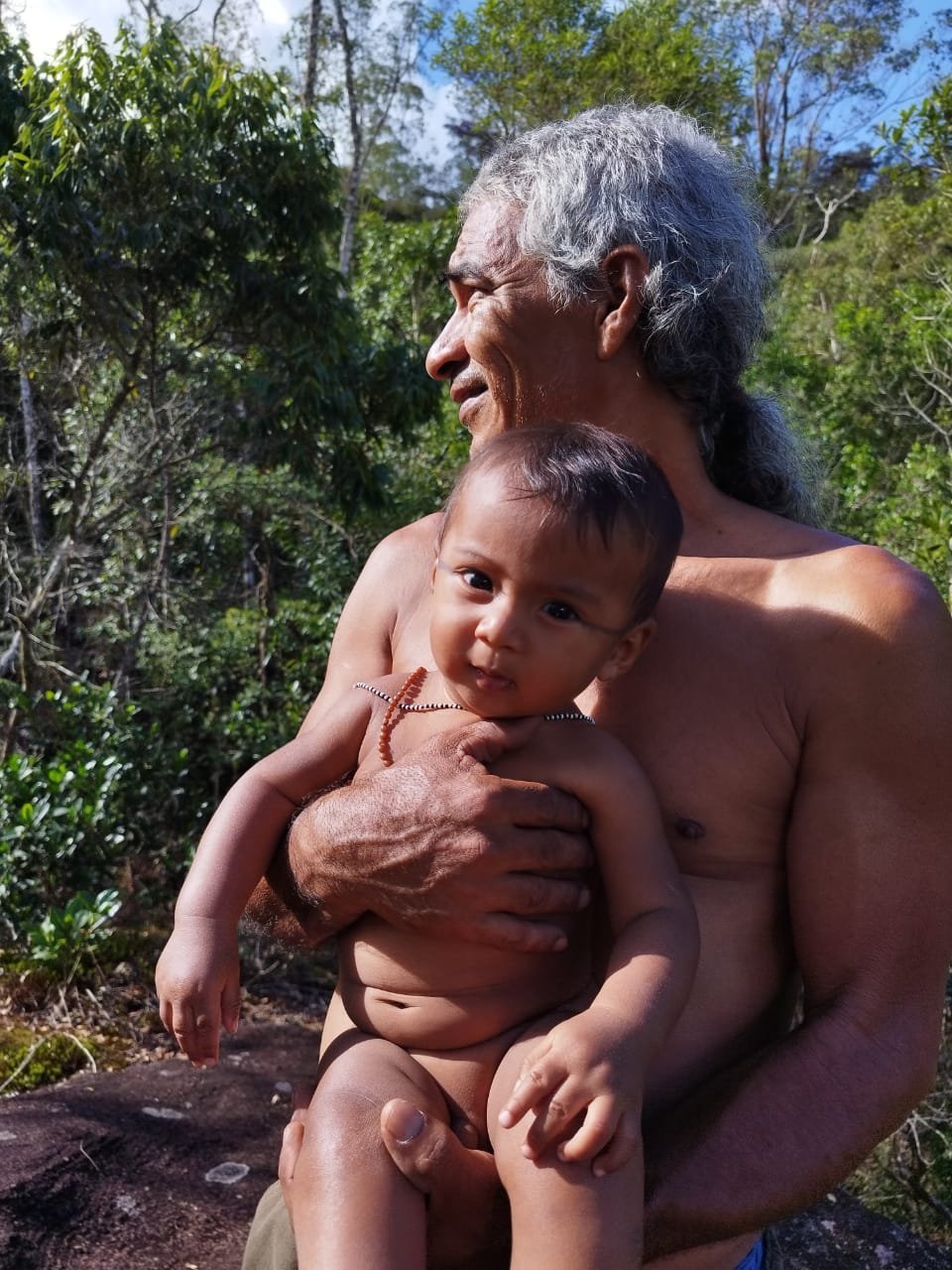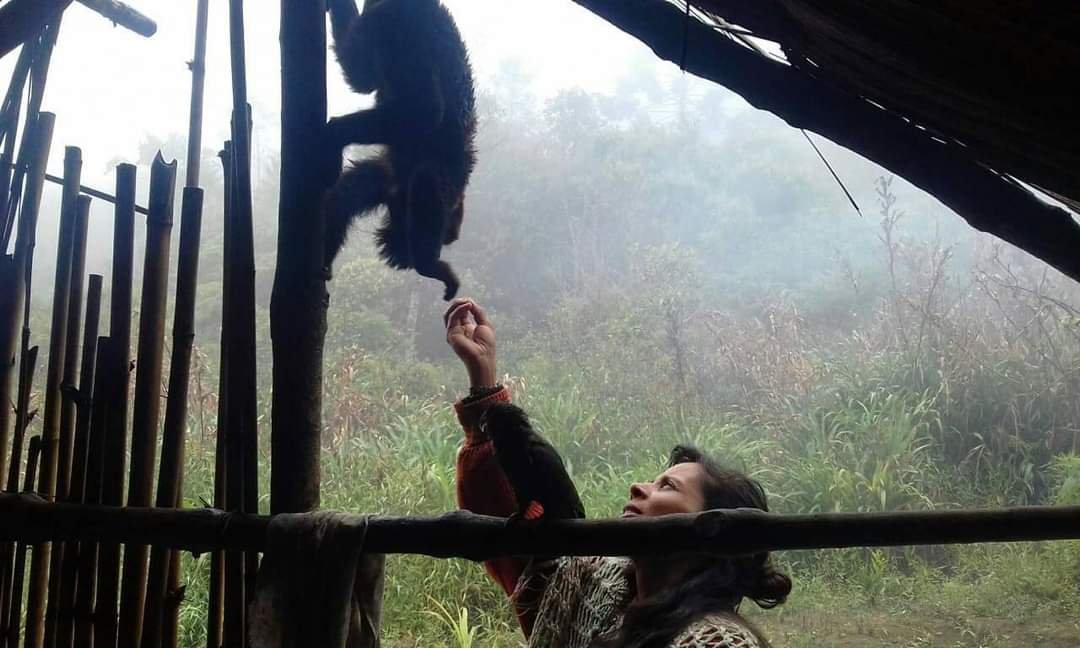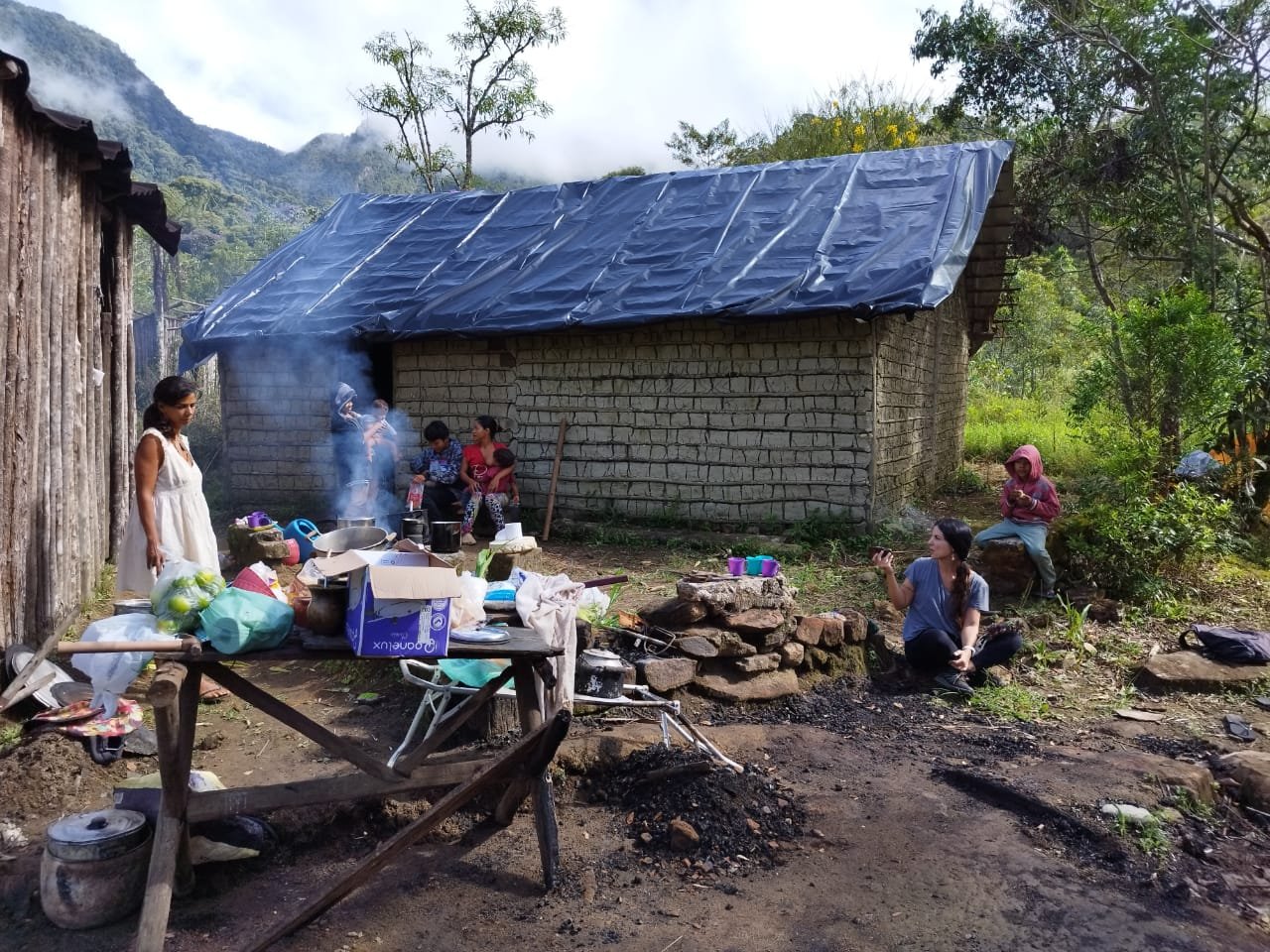Rebuilding a sacred village with the Guarani
A journey up the mountain
It was two weeks before Brazil’s most important party week of the year, and I still hadn’t thought about what I would be doing, when my friend Fernanda got in touch. Aldeia Águas Cristalinas Sagradas (the Indigenous village of Sacred Crystaline Waters), where she had lived for five years and bore a son, had been looted and burned. Along with her partner, Guarani leader Marcelo Guarani, she was putting the word out and organising a collective effort to start reconstructing the sacred site, asking for volunteers and financial assistance.
Fernanda and Marcelo, leaders of the Guarani village
It looked like an important mission and a great opportunity to help, and perhaps to plant some seedlings from our Brazilwood nursery. The directors of the NGO RAIN where I work were excited to help by providing seedlings and also raising money, so we launched a fundraising campaign and published a blog post describing the history of the Guarani and the recent arson attack. In the first week we raised R$1,400 (£220). I was extremely happy that we could help out with the costs, which were considerable.
Thanks to dad’s company!
OK - all set. And what now?
How would we get the seedlings there?
Since my work was voluntary and not funded by RAIN, I was unable to rent a vehicle by myself. I talked with my father about the situation, and by the next day he had managed to borrow a van from his company - we’d just have to pay for petrol and return the vehicle first thing Wednesday morning.
I made every effort to find another volunteer to go with me, but without success (Carnival, right?!).
So I went alone.
All set, nothing sorted and off I go on Carnival Friday, with a huge backpack, my tent and sleeping gear, a fuelled-up vehicle and 80 Brazilwood seedlings, with “faith in God and feet on the road - “fé em Deus e Pé na estrada,” as we say in Brazil. It took a while to get going, and I ended up at the end of the road a little later than the ideal time for beginning the hike up the mountain, but my will was strong so I strapped on my headlamp to tackle some of the trail by night. “I’ve faced worse situations”, I thought.
Hiking uphill through the heart of the Atlantic Rainforest, with an enormous weight on my back as the gloom, turned out to be a huge challenge. After an hour and a half, I smelled smoke, and thought “Great! Where there’s fire, there are Guarani”. Fire is sacred to the tribe, and they always keep it lit so they can light the Pentangua (pipe), cook food and keep warm. I arrived at nightfall, which is when Guarani people meet in their opy (sacred house) to pray in song to Nhanderu (Great spirit/God). I put up my tent and went to join them.
An attack on the prayer house
We began to work as a collective. The roof of the opy had been torched, so we replaced it with a tarpaulin we bought, which meant we could use the sacred space during the course of the project. The seven tents put up sheltered roughly fifteen people including children.
The village is small, surrounded by the Atlantic Rainforest and crystalline waters. The local area has a lot of unmanaged brushwood close, which is a hazard in a place with snakes - and we spotted a massive one close to where we went to collect water. General clearing of the area needed to be carried out, with special attention to the surrounding brushwood. We had no bathroom, not even running water. We intend to carry out further collective works and fundraisers in order to build a compost toilet and facilitate access to water.
The site had been donated to two Guarani custodians around fifteen years previously, but Fernanda told me that no families had lived there for some time due to the difficulties in accessing the location. The last families had left a year ago, since there were Indigenous people among them who were over 90 years old and might need rapid assistance.
The current idea is to organise and rotate the different families so that the place will not be left empty again. This village at the top of the sacred mountain would be visited for sacred rituals to reconnect with nature in the opy.
Rebuilding together
When Saturday dawned, everyone was assigned tasks. I went back down the mountain with Daniel Guarani in order to bring up the seedlings and more supplies. Daniel made a backpack out of the straw-string bag, filled it with maize and put it on his back, and also carried a big bag full of Brazilwood seedlings in his arms. Together we carried up 40 seedlings, and later another two volunteers brought up some more. Another challenge was successfully overcome, with lots and lots of sweat!
Guarani cooking
On the first day we made the traditional fire-cooked Guarani meal, country-style chicken, rice, beans and cassava. I noticed how delighted the Indigenous people were to eat meat, which is very expensive for them, and hard to get hold of. Saturday had been a day of intense sun. Water from the nearby waterfall refreshed and energised us, and as darkness fell we all met in the opy to pray and give thanks. I felt immense strength in those moments. Everyone had their own pipe - myself included. Beautiful, sacred songs were chanted.
On Sunday we continued cleaning, focusing on clearing the brush so the snakes would keep away, and we did some planting together, as well as more pipe-smoking. The transportation that had been organised to bring the Guarani families was only available on Sunday, and sadly they could not stay longer. We planted some seedlings together, and at the end of the day they took down their tents and went down the mountain to catch their ride back to Aracruz.
Elias cleaning up
I remained behind with two volunteers. My new Indigenous friend Elias has a great deal of knowledge about the Guarani culture and language. Together we decided that we would stay to finish cleaning the containers, remove one tarpaulin and finish planting the Brazilwood seedlings. Thus ended another day, first with prayers in the opy at dusk, then a conversation around the fire, followed by silence and the darkness of the jungle, and a final “good night”!
On the last day we finished what we’d agreed to do, and were very happy to accomplish our mission. I was left with lot of horsefly bites (this horsefly is a giant fly with a painful bite that itches for days and leaves a mark), near-heatstroke, major back pain...and a smile on my face of pure satisfaction.
I relaxed a little on Tuesday before hitting the road at the end of the day. I arrived home at midnight. My English colleagues say “knackered” for these situations, but I think that would be an understatement! Another mission had been accomplished successfully, however, with sweat, harmony, happiness, unity and love. We took the first step and it worked out. What a great feeling!
I was somewhat annoyed with myself for not having posted as much on social media as I’d have liked, but Fernanda’s thank-you video which we made when I was leaving left me feeling super-happy and joyful at heart.
Priscila at the aldeia
I’ll happily admit that the mountain demands a lot of physical and mental strength. I arrived home extremely tired, with a sore throat, my legs purple with bites, the skin of my face dyed with an ink that takes 7 days to wear off (!!) and my body screaming for rest. The experience was unique, different, challenging and very rewarding. I’m extremely lucky to be able to participate in events like these, which are so special and priceless. Memorable, in fact!
And now I’m ready for the next one!
And I’m so grateful!
Partner with RAIN and Indigenous communities
Your help can empower the Guarani to restore their forests and their cultures.
Learn more about how your business can help.
